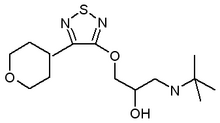MEDICATION ERROR
Salty language
Recently, when checking a patient at the beginning of my shift, I realized that the wrong IN. solution was hanging. He had a high serum sodium level and was supposed to be getting 5% dextrose in 0.45% sodium chloride solution. Instead, he was getting 5% dextrose in 0.9% sodium chloride so lution. I changed the solution, wrote an incident report, and monitored the patient closely; fortunately, he had no adverse reaction to the solution.
When the nurse who'd hung the wrong solution found out what I'd done, she used some salty language to express her displeasure with me. She said that the error was minor and, because the patient wasn't harmed, I shouldn't have made a "big deal" about it.
Was I wrong to submit an incident report? And how should I respond to my angry colleague?-J.J., ALASKA Regardless of whether the patient was harmed or not, a medication error warrants an incident report. Incident reports aren't used to punish people for errors; they're intended to help facilities track error patterns and investigate ways to minimize mistakes. They also give risk management a "heads up" regarding possible lawsuits that can then be headed off by early intervention. So to answer your first question, your actions were entirely appropriate. Your colleague's response makes us wonder if she's been punished in the past for an incident or if she's not mature enough to take accountability for her mistakes.
How should you handle this conflict? Once she cools off, find an opportunity to sit down and talk with her. Remind her that patient safety is the first priority; ethically and legally, you were obligated to act as you did.
Your nurse-manager may want to arrange for the risk manager to lead a staff-development meeting to update the staff on when to use an incident report and what they're used for. The staff needs to understand that incident reports are used to improve the quality of care throughout the hospital, not to punish staff members for errors.
SCOPE OF PRACTICE
Stepping over the line
At the extended-care facility where I work, one of the nurses on the night shift regularly performs actions outside her job description. For example, last week she dispensed timolol (Timoptic) eyedrops to a patient and "diagnosed" another patient's sebaceous cyst and incised and drained it. This RN's been working at the facility for over 20 years, and she feels her experience gives her the right to take any action she deems necessary. My colleagues and I believe her actions are not only unethical, but also may be illegal. Another RN and I have spoken with someone in administration about our concerns, but nothing's happened. What can we do?-Y.H., IOWA
Our clinical consultant suggests that you check your facility's policy and procedure manuals for written job descriptions, which should confirm that your colleague is taking unauthorized actions. Also check your state's nurse practice act to define a nurse's scope of practice. If you find any conflicts, remember that the nurse practice act supersedes facility policy.
Present your concerns to your nurse-manager and administrators, including the risk manager, in writing. Have all affected staff members sign the document. A signed document has more weight than just "talk," and it creates a record of your actions.
The nurse-manager should speak directly with this RN, who needs to know that unauthorized actions she takes on her own authority-whether the outcome i! good or not-exceed the scope of her practice and could put her license in jeopardy. Continuing to act beyond the scope of nursing practice endangers patients and places both her and the facility at risk for legal liability.
If the nurse-manager doesn't take action, continue up the chain of command. If this nurse continues to practice beyond the scope of her license, you must report her actions to the state board of nursing.
INFECTION CONTROL
Debugging equipment
I'm an RN at a nursing home that's connected to a hospital. As the nursing home's representative on the infection control committee, I'm concerned about whether our protocols are appropriate for equipment that's been used with patients who have methicillin resistant Staphylococcus aureus. For example, we use thermometers with disposable tips and the same stethoscopes and blood pressure cuffs for these residents. And of course we follow standard precautions. But is that enough?-N.E., WASH.
Our infection control consultant uses disposable one-patient thermometers with sheaths when taking temperatures for patients in isolation. When the patient is discharged, dispose of the thermometer in the appropriate biohazard trash receptacle.
As for stethoscopes and blood pressure equipment, you should also use disposable one-patient-use equipment. Our consultant says these should be left in the isolation room and disposed of in the appropriate biohazard receptacle when the patient is discharged.
Vancomycin-resistant enterococci, for example, remains viable on bedside tables, handrails, and other environmental surfaces, so a contaminated stethoscope placed on a table can contaminate the table. The room and equipment alike must be disinfected to prevent spreading disease.
Meet with your nurse-manager and the infection control nurses to discuss updating your policy and procedure. Also check with the Centers for Disease Control and Prevention to obtain the most upto-date information. Their Web address is http://www.cdc.gov.
Nursing2002 will seek professional advice on any reasonable problem connected with nursing. E-mail your questions to bpo com or write to Advice Editor, Box 908,Springhouse, PA 19477. We will pay $40 for any problem selected for publication and disguise details to ensure your anonymity.
Copyright Springhouse Corporation Apr 2002
Provided by ProQuest Information and Learning Company. All rights Reserved



